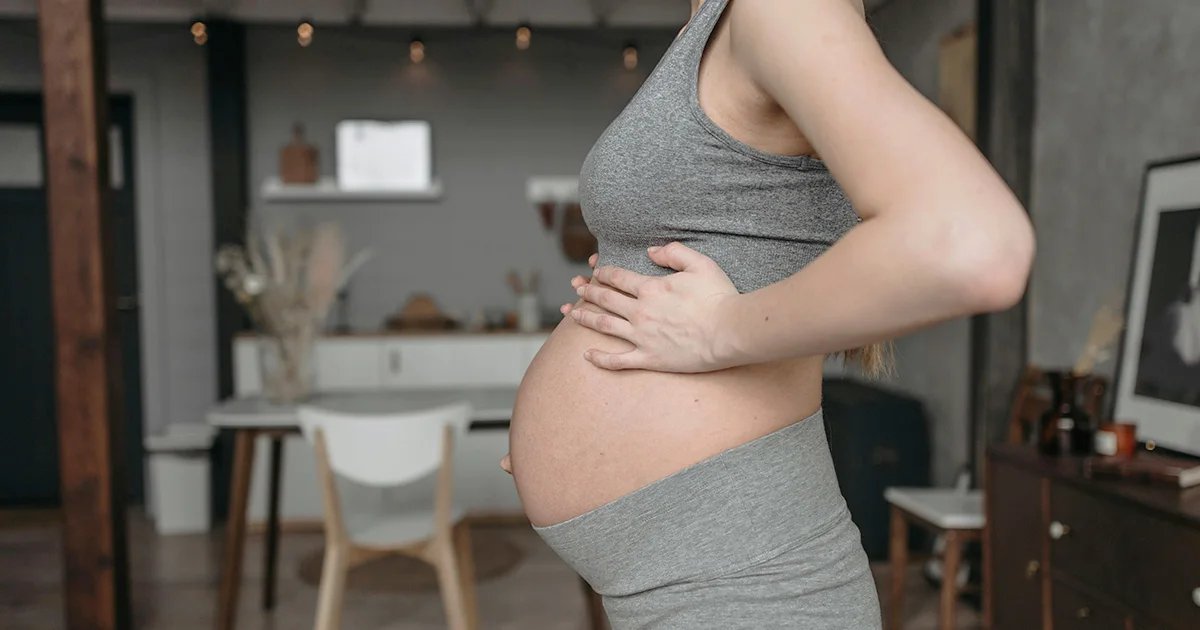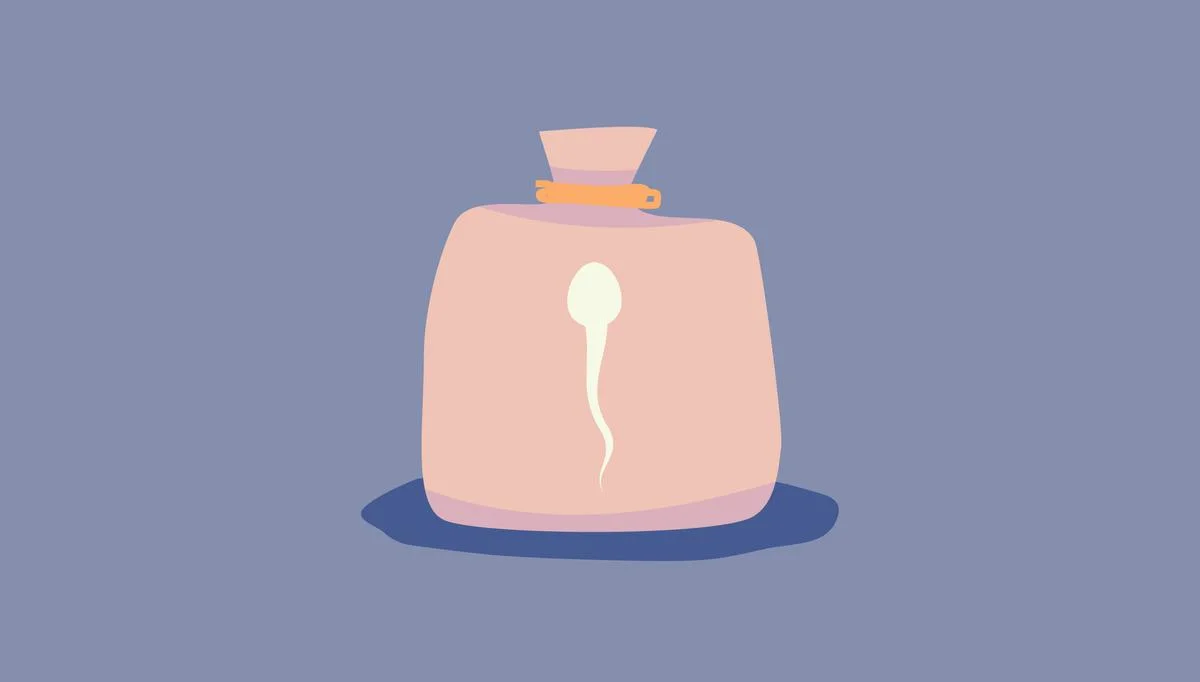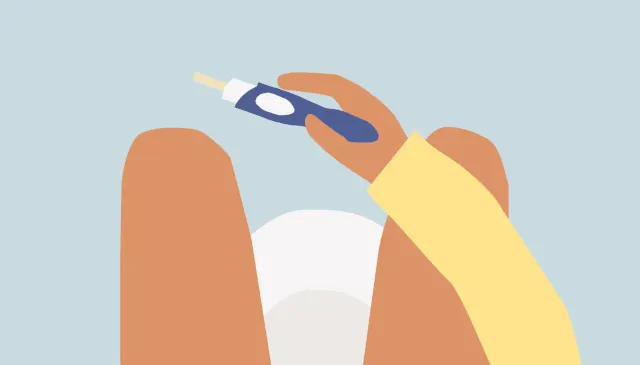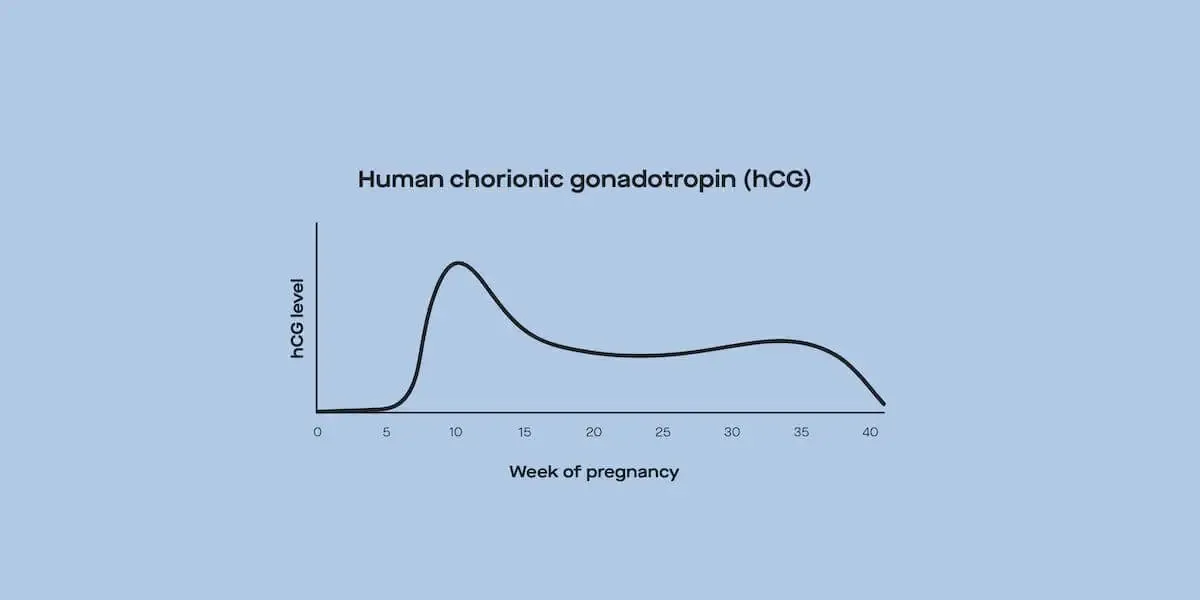Here's what we'll cover
Here's what we'll cover
As we get older, our bodies go through lots of changes — both on the inside and on the outside. One of the less visible changes we experience involves our fertility. Misconceptions about fertility (perpetuated on TV, in movies, and maybe even by well-meaning family members) might give you the impression that your “biological clock” shuts off as soon as you hit your mid-thirties.
While it may be true that your fertility changes when you reach this age, those changes are very gradual — pregnancy doesn’t become impossible overnight. The frustrating part? We don’t often get to hear the accurate, nuanced information about age and pregnancy we need to effectively prepare for our fertility journeys.Enter Dr. Jane van Dis, MD, FACOG, one of Modern Fertility’s medical advisors. Dr. van Dis recently co-hosted a virtual info session on getting pregnant after 35 — which is sometimes called “advanced maternal age” — as well on how and why fertility changes as we get older. Dr. van Dis, who is the CEO of Equity Quotient, the co-founder of OB Best Practice, and the co-founder of TIME’S UP Healthcare, also brought to the (digital) table her personal experience: After giving birth to twins at age 39, Dr. van Dis intimately understands how to navigate pregnancy later in life.
After reading this article, you’ll get the answers to the following questions:
Why does fertility decline as you age?
In addition to age, what other factors also influence fertility?
Does age impact male fertility, too?
What risks are associated with pregnancy after 35?
Are there ways to improve your chances of conception?
Why does fertility decline as you age?
As Dr. van Dis sees it, conversations in women’s media may convince you that your fertility “falls off a cliff” as soon as you turn 35. In actuality, it’s a gradual and manageable shift. Once you turn 35, your chances at conceiving during your most fertile days slightly decrease each year.
According to the American Society for Reproductive Medicine (ASRM), these are a person’s chances of getting pregnant without clinical intervention (i.e., reproductive technology like in-vitro fertilization, or IVF) per cycle, based on age:
Average 30-year-old: 20% chance of conceiving (1 in 5 chance)
Average 40-year-old: Less than 5% chance of conceiving (1 in 20 chance)
According to one 2004 study of 782 opposite-sex couples, these are a person’s chances of getting pregnant without clinical intervention after one year of trying to conceive, based on age:
Ages 19-26: 92% chance of conceiving in one year
Ages 27-34: 86% chance of conceiving in one year
Ages 35-39: 82% chance of conceiving in one year
In a more recent study of almost 3,000 US couples trying to conceive, pregnancy rates within 12 months ranged from 79% in women between 25 and 27 to 56% in women between 40 and 45. (The average across the entire study was 75%.)
Dr. van Dis stresses that statistics around fertility and age are averages — there are “no hard and fast lines,” she explains. But you can use this information to set expectations. “I’ve worked with women who conceived spontaneously at age 46,” she says, “but the likelihood is really low. Chances of spontaneous pregnancy after age 44 start to approach zero.”
That being said, some studies show that people who have already given birth sometimes have greater fertility into their 40s than those who have never been pregnant. If you’ve already given birth and your first child was born after you were 35 years of age, your likelihood of getting pregnant again may be higher than another person’s.
This shift in fertility happens because the number of eggs we have, as well as egg quality, decrease as we age. People with uteruses are born with 1-2 million eggs in their ovaries. That number drops to 300,000 by puberty, and a person will only ovulate about 500 eggs in their lifetime, according to Dr. van Dis.
What other factors also influence fertility?
Factors unrelated to age that may impact fertility can be broken down into three categories: lifestyle factors, health conditions, and genetics.
Lifestyle factors include smoking, body-fat percentage, nutrition, and endocrine-disrupting chemicals:
Smoking: Beyond tobacco, there are numerous chemicals in cigarettes that can impact how ovaries and fallopian tubes function. So, people who smoke cigarettes are at greater risk for infertility (and sperm motility, or how sperm moves, is affected by cigarettes as well). Currently, there isn’t a lot of data about cannabis and fertility, but newer studies have looked at cannabis and pregnancy. Recent findings discuss links between cannabis and autism, neurodevelopmental problems, and low birth weight.
BMI: Body mass index (BMI) is the measurement tool used by many healthcare providers to assess body-fat percentages (though it’s important to note that BMI is not a perfect system and doesn’t work consistently across different populations). When it comes to fertility, there are certain benchmarks doctors use to explain how this percentage can sometimes affect pregnancy.
If you have a higher body-fat percentage (in BMI terms, over 25), then you may produce more fat cells, which results in higher estrogen and testosterone levels. This can interfere with insulin production, which is a feature of polycystic ovary syndrome (PCOS) that can lead to infertility.
If you have a lower body-fat percentage (a BMI under 19), then you may not have enough fat cells to produce estrogen and go through your menstrual cycle, which also leads to infertility. (No period means no ovulation, which is an important step in conception.) Moreover, if you’re not properly nourished, your hypothalamus can be impacted, preventing your brain from producing necessary hormones.
Nutrition: Dr. van Dis’ nutrition recommendation for pregnant people is to get the majority of your protein from plant-based sources, eat monounsaturated fats (like avocados and full-fat dairy), and to eat lots of plants (think “very colorful salads,” Dr. van Dis suggests).
Endocrine-disrupting chemicals (EDCs): EDCs can be found in many household products, especially plastics. When you’re exposed to these chemicals, they mimic naturally occurring hormones in your body — like estrogen and testosterone — and your body reacts by stopping or increasing its own production of those hormones. If your fertility hormone levels get disrupted, conceiving is difficult. Dr. van Dis’ recommendation? “Try not to microwave your plastics, and if you can, use glass over plastic,” she explains..
Various reproductive and hormonal health conditions can also affect fertility:
PCOS, as mentioned above, can disrupt fertility, as can endometriosis. The latter can cause tubal blockages that prevent pregnancy, but its role in infertility is not completely understood.
Uterine fibroids or polyps can grow in numerous areas surrounding the uterus, but ones that grow inside the lining of the uterus can lead to infertility. Doctors can remove these benign growths to make conception more possible, barring any other issues.
Primary ovarian insufficiency (POI) occurs when a person’s ovaries stop releasing eggs regularly before the age of 40.
Untreated sexually transmitted infections (STIs) like chlamydia and gonorrhea can also cause infertility.
Lastly, a person’s genetics can influence their fertility. Endometriosis, early onset menopause, and POI often run in families, and those conditions can make getting pregnant more difficult. If a person has chromosomal abnormalities, such as Fragile X, Turner syndrome, or cystic fibrosis, they may also have fertility problems.
What risks are associated with pregnancy after 35?
While there are increased risks for pregnant people (and their infants) after age 35, that doesn’t mean it’s impossible to have a healthy pregnancy: “There are just a few additional considerations,” Dr. van Dis explains.
“I deliver lots of [people] over the age of 40, some over 50, even one over 60. And when I think of what’s happening to the maternal body over age 40, the system most impacted is the cardiovascular system,” Dr. van Dis says. Why? The blood vessels in older people with ovaries aren’t as elastic and pliable as they are when we’re younger. Since pregnancy adds a lot of extra volume to the cardiovascular system, the heart and blood vessels work hard to accommodate those changes. In some cases, this leads to hypertension and cardiac problems during pregnancies later in life.
Some of the pregnancy complications and health problems people over age 35 may face include:
Gestational hypertension (high blood pressure during pregnancy), preeclampsia (high blood pressure resulting in damage to organs, often the liver or kidneys, during pregnancy), and gestational diabetes (heightened blood sugar levels during pregnancy).
While these conditions will require increased prenatal care and medical supervision, as well as cause discomfort during pregnancy, they can be reversible — full recovery is possible once you’ve given birth.
Placental abnormalities, such as placenta previa — a condition in which the placenta does not evacuate the body after pregnancy.
Increased chance of needing a cesarean section (commonly called a C-section).
Higher risk of breast cancer, though researchers don’t yet understand why pregnancy later in life can affect breast cells.
Maternal age can also increase risk factors for the fetus or infant, specifically the risk of miscarriage (usually during early pregnancy), stillbirth, preterm birth (before the due date), and chromosomal abnormalities. For example, 35-year-olds have a 20% chance of miscarrying, and 40-year-olds have a 40% chance of miscarrying. A 30-year-old has a 1 in 940 chance of giving birth to a baby with Down Syndrome, while a 45-year-old has a 1 in 35 chance.
But as Dr. van Dis reminds us, many people in their 40s go on to have healthy pregnancies.
How does age impact male fertility?
Some people assume that if your partner has sperm, their age doesn’t matter at all in terms of fertility. But the fact is that fertility does decline over time for people with sperm — just at a much slower rate than it does for people with ovaries. In fact, about 30% of infertility is due to the male factor, and semen quantity is said to peak between 30-35 years old, Dr. van Dis explains. (Many sperm banks instill donor age cutoffs at age 39 for this reason, or as early as 34.)
Sperm motility, the ability of sperm to move efficiently through the vaginal tract, decreases by 54% when comparing people with sperm ages 30-35 and people ages 55+. In a 12-month period, conception is also 30% less likely for those older than 40 than it is for those younger than 30.
Are there ways to improve your chances of conception?
Fertility hormone testing, ovulation testing (for ovulation prediction), and various lifestyle adjustments can help you be proactive about your fertility and make informed decisions about your pregnancy options.
If you’re over 35, testing your fertility hormones can prepare you for a discussion with your provider about your parenthood goals, devising a plan, and understanding how biology fits into it.
Your OB-GYN will recommend you to a fertility specialist if you’re over 35 years old and have been trying to get pregnant for six months. In an appointment with the specialist, you may discuss genetic screening tests to check for specific causes of infertility, medications that stimulate egg production and ovulation, such as follicle-stimulating hormone (FSH) and luteinizing hormone (LH) injections, and fertility treatments like intrauterine insemination (IUI) or IVF.
Recommended lifestyle adjustments to support fertility include sticking to regular exercise and sleeping schedules, as well as managing nutrition and taking prenatal vitamins. Dr. van Dis recommends taking 400 micrograms of folic acid daily to reduce the risk of neural tube (brain and spine) birth defects — which is also the official recommendation of the American College of Obstetricians and Gynecologists (ACOG) — as well as some calcium, vitamin D, and iron if you can.
Watch our full convo with Dr. Jane van Dis below, and stay tuned to Modern Fertility for the latest on reproductive health, right from the experts.
DISCLAIMER
If you have any medical questions or concerns, please talk to your healthcare provider. The articles on Health Guide are underpinned by peer-reviewed research and information drawn from medical societies and governmental agencies. However, they are not a substitute for professional medical advice, diagnosis, or treatment.










